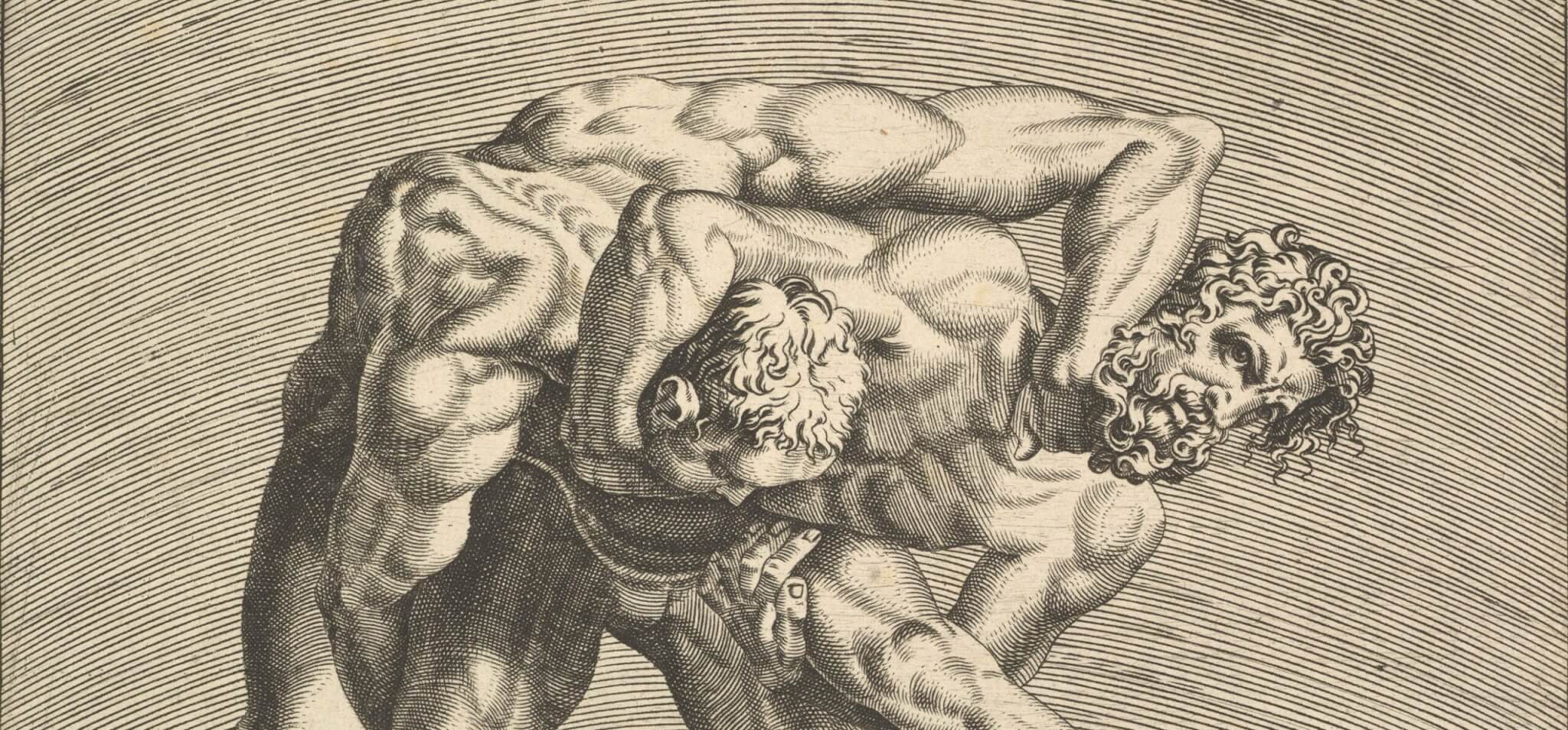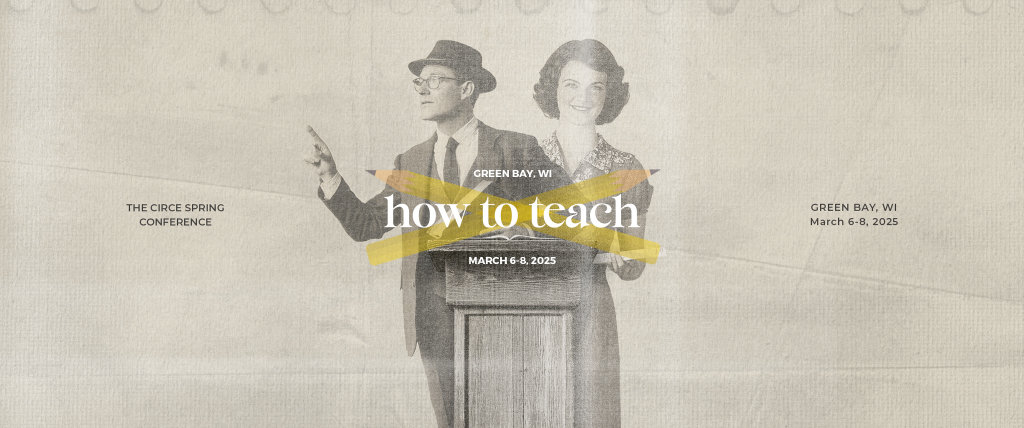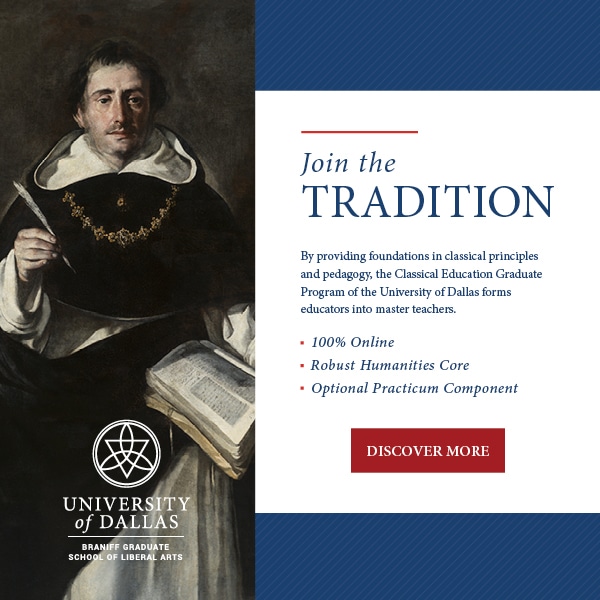Wrestling with Classical Education

What is classical education? Who has the authority to define it and categorize it? What is its purpose and what should its outcomes look like?
These questions frequently circulate in classical circles, and, at first, it may appear that such debate is a mark against classical education. It’s as though, in the zeitgeist of our times, if a thing can be rigorously argued over then the thing itself may be of dubious value; many seem to believe, these days, that if there is no conformity there can be no benefit. In reality, that which we argue about the most heatedly is likely to be of profoundest value and profit – even if we sometimes get stuck wrangling over details.
The tensions in dealing with education in general are longstanding. For example, illustrating that concern over education is no novelty, Eva Brann writes in Paradoxes of Education in a Republic: “…some reading in the history of education produces a recurrent sense of déjà vu: all the pedagogical miseries are so old! ‘Our post-revolutionary youth,” wrote Jefferson to Adams, “are born under happier stars than you and I were. They acquire all learning in their mother’s womb, and bring it into the world ready-made’ (5 July 1814). Or: ‘They say that we learn nothing in the lectures, especially in the higher books, namely of physics and the like, but when the time comes for promotion it will be given us.’ (Scholars’ Manual at Heidelberg University, 1481). Evidently, one-and-a-half centuries ago reading was already going out of fashion and five centuries ago degrees were being degraded.”
The fact is that what education “is” (let alone classical education in the liberal arts tradition) happens to be a burning question, and I often see educators focus on looking for an easy-to-digest definition, and then categorizing education according to that definition rather than focussing on integrated content, process, and purpose. Contemporary examples include the trend of lumping studies in STEM or humanities categories. In reality, all studies are interwoven and inform upon one another, and to fragment them is to produce an artificial, and handicaped, educational vision. This applies not only to more modern articulations of education but to classical educators as well who, for example, might view literature as unrelated to the sciences or musical arts as cut off from history.
I was an undergraduate at St. John’s College, where Eva Brann has been a longtime faculty member. It’s sometimes referenced as one of the few extant “classical” colleges. There, four years are spent immersed in the seven liberal arts studying literature, drama, and poetry (e.g., Homer and Aeschylus through Shakespeare to Dostoevsky, Austen, and Dickenson); inflected language (e.g., Ancient Greek and French); philosophy (e.g., Plato and Aristotle through Hume and Kant to Hegel); mathematics (e.g., Euclid to Descartes to Einstein); the sciences, including astronomy (e.g., Ptolemy and Copernicus through Newton and Darwin); theology (e.g., the Bible, Anselm, and Aquinas to Kierkegaard); and music (theory and history to great works and opera). The learning setting at St. John’s consists of small group discussion-based tutorials made up of the number of students who can fit comfortably around a conference table as well as conversational seminars of somewhat larger groups focused on exploring opening questions – questions which, by design, lead to more queries about a variety of the deepest inquiries humanity has been exploring since we have record of such things. The St. John’s community turns to one another, including the faculty whom we call “tutors,” as fellow learners to help us read in this way as we explore the works of the liberal arts tradition. This is done primarily through discussion, though we present many demonstrations (for example of mathematical and scientific proofs) for one another and write a fair number of papers in all areas from philosophy to literature, math, science, and music (including a thesis paper in our senior year for which we are required to make an oral defense to members of the faculty). All texts read at St. John’s are original: no textbooks; no interpretations of the texts by commentators; no study guides…just the words the authors crafted.
I provide the description of my St. John’s education here as an example of “classical” education. Yet even as a graduate of St. John’s, I would not go so far as to claim its approach to be the sole representative of classical, liberal arts education. And, as far as I can recall, amongst ourselves, we at St. John’s never talked about our education as “classical.” We simply tuned into the voices of the authors we read as our guides; our maxim was that the books were our teachers.
Again, Eva Brann reveals what truly lies at the heart of education: “…the course of education is the course of learning to read, and to have an education is to know how to read…There is a world that comes into being and moves quite without us – the world of nature. There is a realm designed and produced by us – the world of art. And there is a sphere that reflects or, perhaps, frames these two – the world of knowledge…Education is the course in which human beings learn to take up and read that reflective sphere, and through it the other worlds…reading is the recovery of meaning, the reappropriation of reflection, the interpretation of speech. Therefore, reading concerns itself with what has already been thought and said… Since this reflective realm is deposited in texts, education properly centers on books – books of musical notes, of mathematical symbols, but, most of all, books of letters, words being the peculiar conveyance of thought and the most faithful way in which the gift of another’s thought can be presented to us” (Paradoxes of Education in a Republic).
In the intervening years since I was a student at St. John’s, I’ve experienced public education in my graduate studies and then have spent nearly thirty years homeschooling – beginning on my own when my children were little and few people even recognized the term “classical,” let alone were talking about it. In my homeschooling, I put into practice what I learned at St. John’s both in terms of process and content, and then at various times as my children grew I affiliated with others. Some of those are now identified as “neoclassical,” while others lean in other directions, such as Charlotte Mason’s philosophy. Because I’ve been immersed in this endeavor for some time, I can attest that the concept of education – not to mention classical education – is not a rigid, clearly defined one. In fact, I contend that the most important understanding of education – and again, especially classical education – doesn’t include a limiting definition of education so that it fits neatly within one category or another; that action may in fact be quite detrimental.
Chesterton expresses not only an insightful but a highly useful comprehension of education in What’s Wrong with the World: “…the main fact about education is that there is no such thing. It does not exist, as theology or soldiering exist. Theology is a word like geology…But education is not a word like geology…Education is a word like ‘transmission’ or ‘inheritance’; it is not an object, but a method. It must mean the conveying of certain facts, views, or qualities…handed from one generation to another.…Education is tradition…”
The Greeks used the word paideia to articulate this concept. The tradition being transmitted is the process of education; with respect to classical education, the paideia transmits the liberal arts tradition. And it’s the process – the act of educating, such as Eva Brann notes above – which can be described and assessed; it isn’t that education in and of itself must be lexically pinned down and then pigeonholed under one strict category or another.
There is ample precedent for arguing over what the liberal arts tradition is, and similarly one can argue over how to pass it forward. However, though there are parameters around all of this, I venture to claim that we will never arrive at one single, satisfying legalistic list of liberal arts content, and there will not emerge one single, satisfying legalistic process of transmission. Rather, there are boundaries and generalized best practices which we should seek. That doesn’t mean that someone who follows such best practices “to a T” will achieve guaranteed success, nor does it mean that someone who deviates will necessarily fail.
If I’ve learned one thing from the liberal arts, it’s that they defy legalistic quantification and classification. Classical educators ought to be comfortable with that ambiguity, for above all else we cherish the human student. Human beings are creatures filled with uncertainties…and even contradictions and paradoxes…who defy legalistic quantification and classification; the education of human beings should therefore follow suit.
Having had a lifetime of experience with this – in my own education, with my own children as I’ve homeschooled classically over decades, and with other students whom I’ve been honored to guide – I’ve arrived at a place where I encourage people to focus less on asserting a definition and categorization for classical education and to focus more on comprehending the liberal arts and incarnating processes which are strengthened by different insights, articulations, and approaches. This does require time to read, research, and explore; and it does require the ability to implement ideas and then tolerate both failures and successes. Then again, this process of learning and of trial and error is educational in and of itself and will broaden our abilities to ultimately choose best.
We are blessed to live in an era where resources in classical education are so abundant that we can enjoy the luxury of disputing over them.
I don’t mean to say one shouldn’t assess and determine what is most right and fitting – but take advantage of all the wealth that is available from many differing resources, even though they may not align exactly with the way you lean or think most appropriate. I would have been thrilled, thirty years ago, to have the resources and fellowship now available to those of us who wish to pursue education in the classical, liberal arts tradition – whether in the home or in institutional settings. By all means, guard against what you deem undesirable for your student(s), but celebrate the choices and insights in the process of passing along rich and good tradition; not only that, but rejoice in the great progress we have made in grasping classical education which is, above all, humane.
David Hicks writes that “Education at every level reflects our primary assumptions about the nature of man, and for this reason, no education is innocent of an attitude toward man and his purposes” (Norms and Nobility). So, what do I mean by “humane” education? At its simplest, I mean this: My edition of the Oxford English Dictionary (though I may perhaps be accused, here, of the crime of chronological snobbery, my OED was purchased not long after I graduated from St. John’s and so by the very fact of its age it’s likely to offer a more “classical” definition) describes humane as behavior or disposition towards others as befits a human being; gentle or kindly in demeanor or action; civil, courteous, and friendly; marked by sympathy with and consideration for the needs of others. In short, humane education is appropriate to and congruent with what it means to be virtuous in relation to others, to both the divine and the human.
Consider the following nuanced perspectives of the same idea. Stratford Caldecott wrote that “Man is a speaking animal, a self-reflexive animal, an animal with a certain liberty, and therefore a ‘metaphysical’ animal. To know, to love, to rejoice in another, to rejoice in that which is not the self, is the privilege of one who stands apart, and who is capable of making the distinction between self and other” (Beauty in the Word). And as Herbert Read articulated it: “…the aim of imaginative education…is to give the individual a concrete sensuous awareness of the harmony and rhythm which enters into the constitution of all living…to the end that the child, in its life and activities, shall partake of the same organic grace and beauty. By means of such education we instil into the child the ‘instinct of relationship’ which, even before the advent of reason, enables it to distinguish the beautiful from the ugly, the good from the evil, the right pattern of behavior from the wrong pattern, the noble person from the ignoble” (Education through Art).
The upshot of all of this? We should not be troubled by debate about classical education. Embrace all the interest, exploration, initiative, and continued desire to learn and grow in this area, which by the very nature of its being disputed indicates it’s becoming increasingly widespread. It’s by such iron sharpening iron that we’ll continue to see the widening range of that which can constitute deep, meaningful, life-long education seeking humane quality and value. Let’s continue wrestling over classical education – and let’s not lose sight of the fellowship we have in its pursuit, lest by being divided we are conquered.
Kate Deddens
Kate Deddens attended International Baccalaureate schools in Iran, India, and East Africa, and received a BA in the Liberal Arts from St. John’s College in Annapolis, Maryland and a MA in Mental Health therapy from Western Kentucky University. She married her college sweetheart and fellow St. John’s graduate, Ted, and for nearly three decades they have nurtured each other, a family, a home school, and a home-based business. They have four children and have home educated classically for over twenty years. Working as a tutor and facilitator, Kate is active in homeschooling communities and has also worked with Classical Conversations as a director and tutor, in program training and development, and as co-author of several CCMM publications such as the Classical Acts and Facts History cards. Her articles have sporadically appeared at The Imaginative Conservative, The Old Schoolhouse Magazine, Teach Them Diligently, and Classical Conversations Writers Circle.










